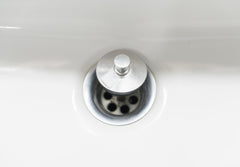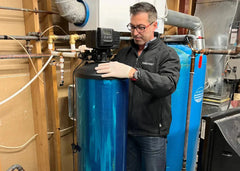A clogged toilet can be an inconvenience that no one wants to deal with. It can cause a lot of frustration and sometimes even embarrassment. However, the good news is that most toilet clogs are preventable. There are numerous reasons why your toilet may keep clogging, and understanding the causes can help you prevent future occurrences. In this article, we'll discuss in-depth the three most common reasons why toilets clog and what you can do about it.
Flushing Down Non-Flushable Materials

One of the most common reasons why toilets clog is because people flush non-flushable materials down the toilet. It is a pretty common misconception that if an object fits through the toilet bowl, it is safe to flush. However, this is not true. Items such as baby or wet wipes, feminine hygiene products, and paper towels should never be flushed in the toilet. These items can't break down like toilet paper and can quickly cause a blockage in your plumbing system.
What You Can Do
The easiest way to prevent this type of clog is to avoid flushing anything down the toilet except for toilet paper. If you use baby wipes or feminine hygiene products, dispose of them in a waste bin instead of flushing them down the toilet. You can also consider using a bidet to reduce your reliance on wet wipes.
Using Too Much Toilet Paper

Another common cause of toilet clogs is using too much toilet paper. While toilet paper is designed to quickly dissolve in water, using too much can overwhelm your plumbing system and cause a blockage. This is especially true if you have an older, low-flow toilet.
What You Can Do
To prevent this type of clog, use only the amount of toilet paper you need. You can also consider switching to a thinner or more eco-friendly toilet paper that dissolves more easily. If you have an older, low-flow toilet, you may want to consider upgrading to a newer model that can handle larger amounts of toilet paper.
Older Low-Flow Toilets

If your toilet is old and has a low flow rate, it may be more prone to clogs. Low-flow toilets were designed to conserve water, but they often lack the power to move waste through the plumbing system effectively. This can result in frequent clogs, especially if you are using too much toilet paper or flushing non-flushable materials down the toilet.
What You Can Do
If your toilet is old and prone to clogs, you may want to consider upgrading to a newer model. Modern toilets are typically designed to be more efficient and powerful than older models, and they are better equipped to handle larger amounts of waste. You can also try using a handy plunger or a toilet auger to clear any existing clogs.
Final Thoughts
A clogged toilet can be a frustrating and unpleasant experience, but there are several steps you can take to prevent future occurrences. Avoid flushing non-flushable materials down the toilet, use only the amount of toilet paper you need, and consider upgrading to a newer, more efficient toilet if your current one is old and prone to clogs. If the problem still persists, it is best to contact a professional plumber. By taking these simple steps, you can keep your toilet running smoothly and avoid the hassle of frequent clogs.
If your toilet keeps getting clogged, you may need to learn how to plunge a toilet. But don't worry because The Shroom Company has got you covered. Our revolutionary plungers are the most effective way to clear your clogged toilet drains by pushing out the clog in one simple step. Shop now!
More Articles from Shroom
How to Fix Shower Drain Noises Before They Get Worse
How to Plunge a Toilet:3 Different Methods You Can Try
6 Possible Causes of Clogged Pipes and How to Address Them
What to Try if Your Shower or Bathroom Sink Drain is Noisy
Disclosure: Links in this article are affiliate links to Amazon products. As an Amazon Associate, we earn from qualifying purchases.




0 comments